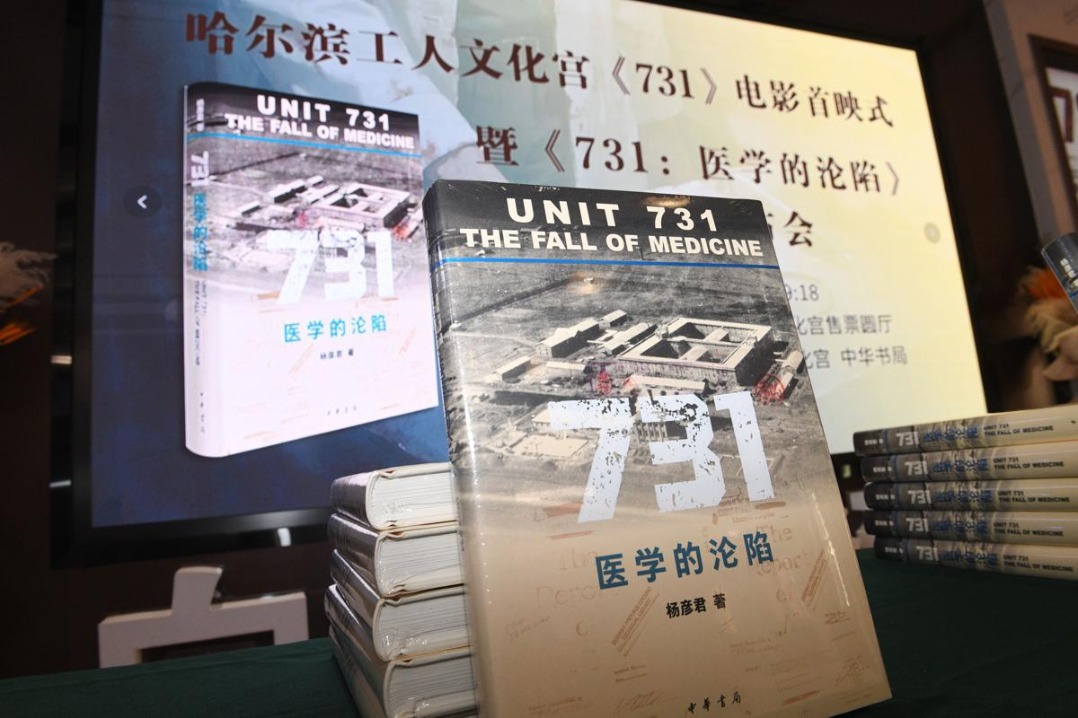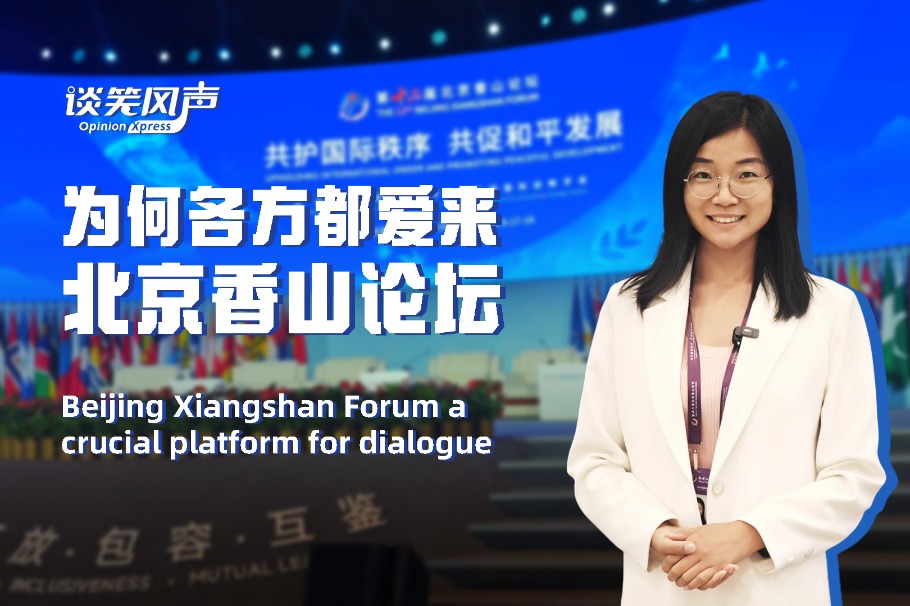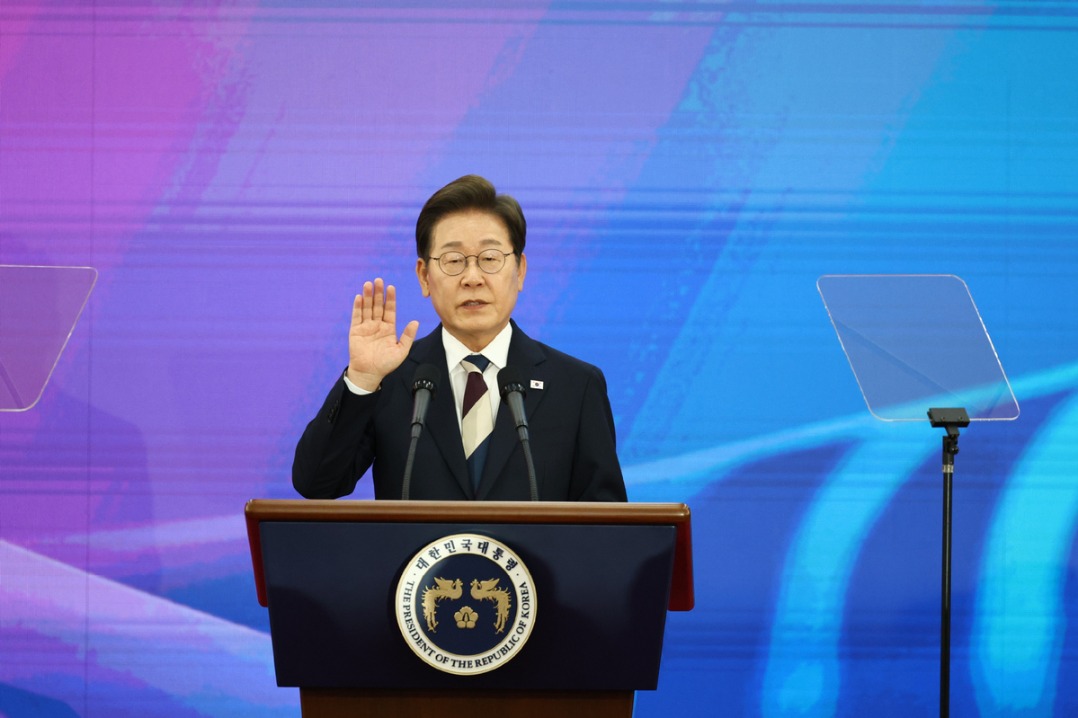Cooperation, not confrontation, vital for East Asia


Editor's note: The 2025 International Forum on Regional Cooperation and Development of China, Japan and the ROK was co-held by Beijing Foreign Studies University and China Daily in Beijing on Sept 19. Below are excerpts from the speeches delivered by five of the experts who participated in the forum.
Governance system needs reform

by Liu Tiewa
The global governance system faces a complex crisis, exacerbated by multiple overlapping pressures including the resurgence of unilateralism and protectionism, non-traditional security threats such as climate change and pandemics, and the rapid advancement of cutting-edge technologies such as AI. Against this backdrop, existing global governance mechanisms have become increasingly fragmented and unbalanced, and have been found wanting when it comes to resolving burning issues.
These challenges have intensified because of the global governance system's inability to adapt to the changes in power structures and development paradigms, and the impact of technological revolutions.
From a development perspective, the sustainable development paradigm faces challenges during implementation. Traditional North-South aid models have been effective only to a certain level, while new forms of equitable partnership, such as South-South cooperation, are gaining prominence. At the same time, financial institutions such as the International Monetary Fund should adapt to the actual economic worth of emerging economies and developing nations.
The rapid pace of technological innovation has outstripped the slower cycle of traditional international lawmaking, creating governance gaps. As a result, soft-law mechanisms including the UN Global Digital Compact, China's Global AI Governance Action Plan, and regional regulations, such as the EU's digital rules, are playing increasingly important roles.
Faced with such multi-dimensional challenges, reforms in any single field can no longer address the systemic risks. There is therefore an urgent need to implement integrated reforms so as to synergize the restructuring of power, transformation of development models, and creation of new rules to make the global governance system fully adaptable to the fast-changing global landscape.
China's role in global governance is evolving from that of a participant to a key shaper. By vowing to help build a community with a shared future for humanity, deepen South-South cooperation, promote the institutionalization of the G20, and by proposing the Global Governance Initiative, China is further contributing its wisdom to global governance.
As major Asian economies, China, Japan, and the Republic of Korea should place mutual benefit over their differences. By closely coordinating rule-making, providing public goods, and reforming the global governance architecture, the three sides can help build more resilient regional supply chains, thereby contributing to a more equitable, inclusive and effective global governance system.
Liu Tiewa is the dean of the Country and Area Studies Academy, Beijing Foreign Studies University.
ROK should strengthen industry chains

by Kang Hogu
When a country achieves rapid economic growth and higher per capita income through cost advantages, rising labor costs often erode those advantages. This shift necessitates moving from cost-based to technology-driven competitiveness. Navigating this transition leads to high-quality development, while failure could result in the country being caught in the middle-income trap.
Multinational corporations must adapt to the situation by identifying ideal production sites for their target markets. Through international trade and foreign direct investment, they can efficiently allocate production resources, driving industry chain restructuring.
Since the 2008 global financial crisis, the Republic of Korea's companies have been restructuring their industry chains. Their foreign direct investment has increasingly shifted from China to the United States and the ASEAN member states. This shift likely stems from two strategies: relocating to ASEAN member states to reduce costs, or entering the US to tap into its market and navigate the political dynamics.
Washington has been encouraging the ROK to invest at least $350 billion in the US. Over the past 40 years, the US, China and ASEAN member states have been the ROK's main investment destinations. Redirecting most resources to the US could result in inefficient resource allocation and a loss of competitive edge for ROK companies.
Washington's stricter immigration and visa restriction policies can also hinder foreign investment in the US. As such, the massive investment and profit distribution demanded by the US could severely impact the ROK economy.
Given these facts, China and the ROK should avoid competing with each other in traditional industries and instead collaborate on R&D for emerging sectors and building technological strength.
The ROK should strategically restructure its industry chains by establishing final product manufacturing for Chinese and US markets in those countries to mitigate potential risks. For global markets, production should be optimized for profitability. China and the ROK should also deepen cooperation in third-country markets.
Besides, the two sides can leverage the Regional Comprehensive Economic Partnership framework to eliminate cross-border duplicate tariffs on intermediate goods, thereby reducing transaction costs and enhancing the global competitiveness of their industry chains.
As China-ROK economic relations shift from vertical division of labor to horizontal competition, friction is unavoidable. However, the two sides should foster a friendly exchange environment and calmly navigate global uncertainties to deepen cooperation, because people-to-people exchanges serve as a mitigating factor in challenging times and catalyst for progress in prosperous times.
Kang Hogu is the director of Sino-Korea Economy/Society Institute.
Shipbuilding has a good future in East Asia

by Ni Yueju
East Asia leads the global shipbuilding industry. Since the 1950s, the epicenter of shipbuilding has shifted from Western Europe to Asia. Japan overtook the United Kingdom in 1956 to become the world's largest shipbuilding nation. By the late 20th century, the Republic of Korea had overtaken Japan as the leading shipbuilding nation. China emerged as the world's largest shipbuilder around 2010 thanks to its significant technological advancement.
Today, China, Japan and the ROK together account for more than 95 percent of the global shipbuilding output, with China alone receiving about 70 percent of the new orders — underscoring its significant scale advantage in the industry.
The three sides have developed distinct competitive profiles: China excels in scale, the ROK dominates high-end technology, and Japan maintains a strong presence in specific niche markets. By leveraging comprehensive supply chains, cost efficiency, and continuously upgrading technologies, China leads in completed tonnage and order backlogs. The ROK accounts for 86 percent of the high-value-added liquefied natural gas (LNG) carriers' market, earning significantly high profit margins. And Japan remains competitive in specialized segments, such as deck machinery and hydrogen-fueled ships.
Behind this competitive landscape is a trilateral dynamic involving the interplay of technology, market and domestic institutions. Technological strength directly translates into market influence — as seen in the ROK's long-standing dominance in the LNG carrier sector thanks to its advanced technologies. Market feedback, in turn, prompts institutional adjustments, such as national subsidy policies and industrial funds designed to enhance competitiveness. Government support, through funding and talent incentives, further expedites technological progress.
The development of the shipbuilding industry in the three countries hinges on their ability to strike an optimal balance among technology, market and institutions in key areas such as green fuels, smart shipyards, and supply chain integration. The country that gains an edge in this dynamic game will secure a more dominant position in the global shipbuilding market.
Ni Yueju is a research fellow at the Institute of World Economics and Politics, Chinese Academy of Social Sciences.
A new paradigm for AI cooperation

by Jun Youn Kim
When cooperating on cutting-edge technologies such as artificial intelligence, two key considerations are crucial. First, it is important to invest early. Second, investing aggressively is essential to boost productivity.
It is commonly assumed that the development of new technologies follows a bell curve. This leads many to chase trends in an effort to seize research and development opportunities in popular technological fields.
However, the reality is that what is currently trendy may actually be technologies that have already peaked and are nearing the end of their life cycle. Investing in them often results in poor outcomes. Instead, focus should shift to "emerging technologies" — those that seem to appear almost out of nowhere. Due to their sudden rise, they are sometimes referred to as "shark fin technologies".
To capitalize on these opportunities, it's essential to identify them at a much earlier stage. Technologies in this initial phase are known as "weak signal technologies". How an organization responds to these early signs of innovation will ultimately determine its future success. These signals are not static but constantly evolving, requiring regular and automated updates to remain relevant.
The second issue is called the productivity paradox. Almost every country expected an average 30 percent increase in productivity from AI. There is a widespread belief that introducing AI will immediately increase productivity and reduce the cost. However, the application of AI technology might lead to a decline in productivity, a phenomenon known as the valley of productivity death. This effect can vary depending on the characteristics of different industries.
A 2024 survey found that if AI accounts for less than 25 percent of existing R&D investment, productivity tends to decline. However, once AI investment exceeds that threshold, productivity begins to rise. These findings suggest that companies seeking to enhance productivity through AI should invest more aggressively.
This underscores the importance of collaborating with external partners. While internal development may be faster, productivity increases when working collaboratively. AI-driven innovation cannot enhance productivity without parallel innovation in existing internal work processes.
Although cooperation in cutting-edge technology can be challenging, our study demonstrates that only by working together can we reduce the costs of exploring optimal combinations and share successful cases. Cooperation is essential for navigating the uncertainties of technological innovation.
Jun Youn Kim is the chief representative of Korea-China Science and Technology Cooperation Center.
Cooperation among three sides crucial

by Osamu Onodera
As members of APEC, China, Japan and the Republic of Korea should be heading toward "an open, dynamic, resilient and peaceful community for the prosperity of all our people and future generations" in turbulent times.
The role of open trade and investment becomes clear when you look at China's fast-paced development since joining the WTO in 2001. Japan and the ROK, despite having limited natural resources and a modest domestic market, have also benefited from free trade.
The Regional Comprehensive Economic Partnership is expected to further deepen economic relations among the three countries, because the share of duty-free tariff lines for industrial goods after liberalization for exports from Japan to China would increase from 8 percent to 86 percent, and from China to Japan to about 98 percent. In the past, often Japan (and the ROK) used to be the supplier of intermediate products, and China or ASEAN member states the manufacturer of the final products which were exported to the US and Europe. That's no longer the case, because China has drastically upgraded its industries, and two-way intermediate goods trade within the region has greatly increased. But all these economic activities will not lead to prosperity if we lose "peace".
The year 2025 marks the 80th anniversary of the end of World War II. Learning from history is key to shaping a better future for all. It's notable that many Chinese agree that learning from history is not about passing on hatred. It is important to look at the historical ties in the region, since the Joint Statement of 1972 and the China-Japan Treaty of Peace and Friendship in 1978, which paved the way for Japan-China cooperation and development during that period. The strong will to avoid military conflict and the aspiration to maintain peace should be our lifeblood.
China, Japan and the ROK are not only neighbors but also share cultural heritages. Buddhism, Chinese characters and silk are some of our important cultural influences, and in the past commodities were introduced to Japan from China often through the ROK.
Last year, at the 9th ROK-Japan-China trilateral meeting, the three countries' leaders agreed to expedite negotiations on a trilateral free trade agreement in order to realize a free, fair, comprehensive, high-quality and mutually beneficial FTA, as well as resume work in fields such as people-to-people exchanges which help maintain stable ties. Equally important is dialogue among the youth, as a fast-changing geopolitical environment, rapid technological advancement, global and common challenges such as climate change and aging population require us to consider new ideas and adopt new approaches.
I believe trilateral cooperation can contribute to economic development, as well as to peace and security, in East Asia, the Asia-Pacific and the rest of the world.
Osamu Onodera is the director of Beijing Representative Office, Japan External Trade Organization.
The views don't necessarily represent those of China Daily.
If you have a specific expertise, or would like to share your thought about our stories, then send us your writings at opinion@chinadaily.com.cn, and comment@chinadaily.com.cn.



































